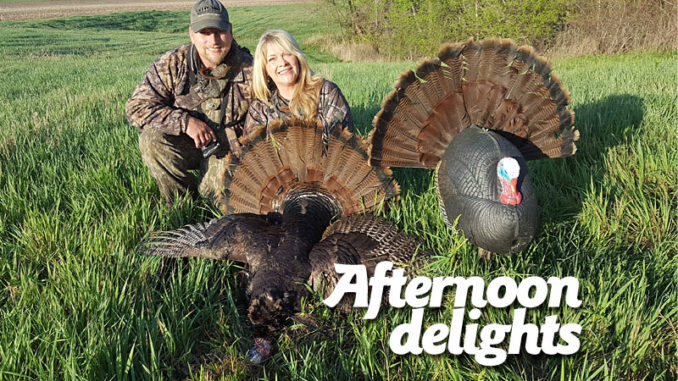
Sleep in and hit the woods for an afternoon turkey hunt
Turkey season is open until May 10 for South Carolina’s Upstate and May 9 in all of North Carolina. Flourishing populations of eastern wild turkeys thrive in both states.
On a typical hunting day, most hunters will rarely miss first light to slip into the woods after a bearded prize. But many hunters call it quits when the lunch bell rings. It’s no surprise that a much-higher proportion of turkeys is taken in the morning, but afternoon hunts can produce results for the hunter with a few tricks in his vest.
Unlike deer, turkeys have downtime under the stars at night. Deer can feed, breed and move all day and night, and quite often, they will move more at night, especially as the season progresses into late fall and early winter. Turkeys are biologically different in that they must do their eating, courting, breeding and frolicking during daylight hours. While morning hunts can be more predictable for most hunters, turkeys will take full advantage of the entire day.
One hunter who fully understands turkey hunting all day is William Terry of Fort Mill, S.C., the owner of Legacy Game Calls, who has been chasing turkeys for 35 years in 10 states and two countries. He said hunters should never give up on afternoon hunts when morning hunts don’t go their way.
Afternoon hunts are plenty productive for turkey hunters
“We take plenty of turkeys in the afternoons,” said Terry (803-416-2424). “Some turkeys become well educated throughout the season, and it takes a full day to get them to come in.”
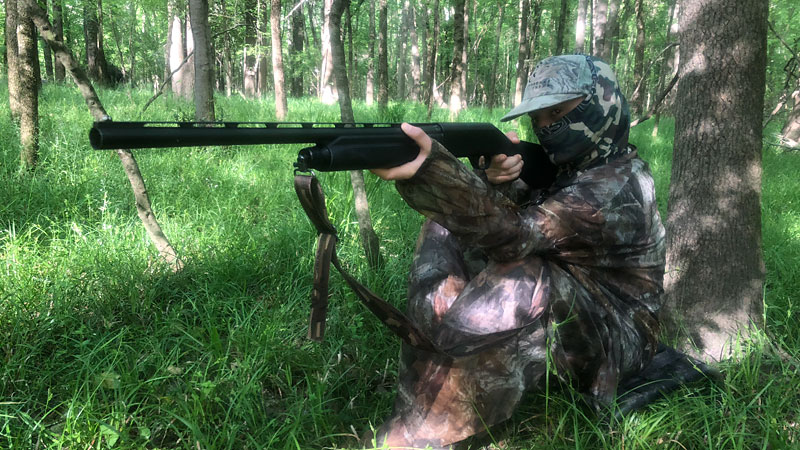
Terry fashions his strategy based on what stage turkeys are in the breeding season. Pressure from other hunters also plays a factor.
“Early in the breeding season, when plenty of hens are available and hunting pressure is low, we will stay mobile and work the farm looking for a gobbler alone. If you get one to gobble after 2 p.m., you will kill nine out of 10 of those birds,” he said.
But later in the breeding season and/or when birds are more pressured than others, hunters face a far different scenario.
“We take a more passive approach in the afternoons later in the season and when the birds are pressured by hunters,” he said.
In preparation for laying and setting on eggs, hens will be feeding as much as possible in places with the most available foods and where danger is limited. Green fields are the perfect scenario. They offer plenty of food and good protection. Fields provide herbaceous vegetation for consumption. And the green growth makes a rich bed for insects. Because of their 270-degree vision, open fields can be the safest places around for turkeys any time of year.
Afternoons are great for setting up along fields
If his farm of the day contains fields, Terry will set up along the field edges in the afternoon.
“Any time you have fields, they are good places to set up in the afternoons. I always make sure to set up on the end of the field towards where they will be heading to roost for the evening,” he said.
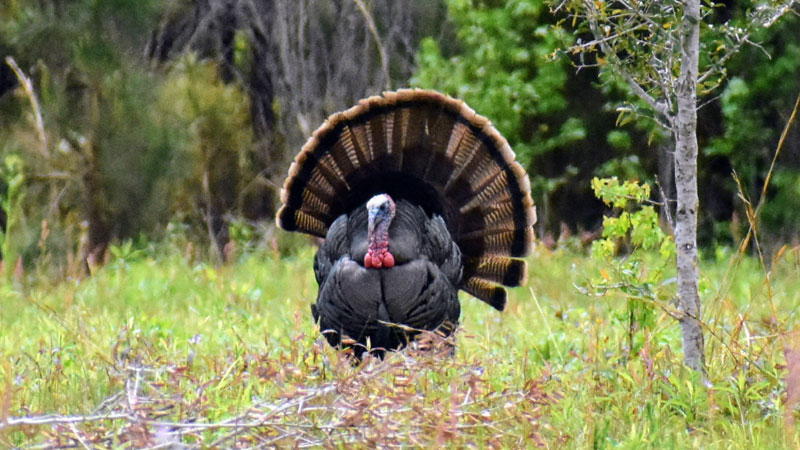
Turkeys may travel for several miles during the day. But they always return to their roost trees in the evenings. Know where birds roost, and nearby areas can be a hot bed as the day presses on towards nightfall.
As a general rule, most turkeys will be less vocal in the afternoon. They communicate vocally in the afternoons. But it’s typically not as dramatic as in the morning unless a gobbler gets jazzed up and coerced into a soapbox shouting contest. But hens are less vocal in the afternoons. So hunters need to follow suit since they are trying to imitate the hen.
“In the afternoons, I set up near the roost areas in fields or in the woods along fresh sign, and I make calls soft and subtle. It’s a good time to get an old bird to come in. But you’ve got to use a lot of soft clucks and purrs,” he said.
Versatile calls are a good bet
Terry keeps a full assortment of calls in his turkey vest. But these days, the No. 1 call in his mouth is the Lone Hen 3 diaphragm because of its versatility.
“I make every kind of call there is, and I use them all at some point, but I like to run the Lone Hen 3 because it is the best of both worlds as far as I am concerned,” he said. “It has a batwing cut for purring and soft calling in the afternoon, or you can cut hard with some volume it in the morning.”
Turkeys travel in groups of anywhere from a pair of birds to large congregations for safety. And they are typically very social as well. The major exception is gobblers. They will venture off in small bachelor groups or can be solitary, looking for receptive hens. Gobblers travel throughout the day, bouncing between groups of hens here and there. Afternoon hunts can be productive for pulling in a gobbler near roosting habitat with soft-calling techniques.
During the spring, it’s not unusual to see turkeys in fields or open woodlands from sun-up to sundown, eating the entire time. As long as they are erect, they are picking at the ground eating grain, bugs or something containing calories. Gobblers will be either feeding or blown up in a full strut, trying to consummate a love affair. Many hunters avoid afternoon hunts. But that’s a mistake because the birds take advantage of every hour of daylight.
Full-strut gobbler decoys make afternoon hunts easier
Over the years, turkey hunting has evolved. Hunters use every kind of call, decoy and device imaginable. Certain gear is a necessity for some hunters and overkill for others. A lot of hunters refrain from using props and exquisite calling tactics. Many stick to the basics to lure in trophies. But sometimes, the right decoy can make a sketchy hunting opportunity a slam dunk.
William Terry of Legacy Game Calls sweet-talks long-bearded gobblers just about every day of the season. He said the right type of decoy can provide just what is needed in certain situations.
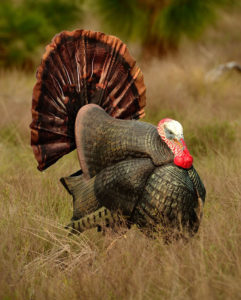
“In the afternoons, I like to hunt fields, and I will almost always use a decoy and only a strutting gobbler,” Terry said. “A strutting gobbler is the baddest thing you will ever use in your life.”
To an incoming gobbler, a strutting gobbler indicates that a hen is close by and probably receptive for breeding.
“When they come into the field and see it, you will know in the first minute what they are going to do,” he said. “Very rarely do I have a turkey walk away. Ninety-nine percent of the time, they will come to it in a dead run.”
Terry is a firm believer of strutting gobbler decoys, but he will only use them in open fields, and mostly in mid-day and the afternoons. In the woods, he prefers not to use any decoys, depending on bringing birds in strictly by call and avoiding anything that may stop the birds on the final approach.
“You will have more turkeys come to a strutting gobbler than anything else,” he said.

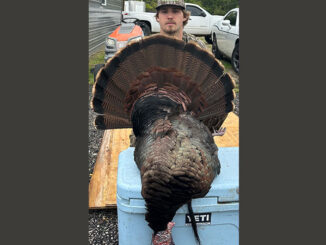
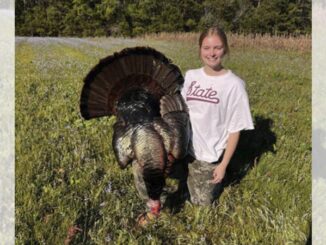
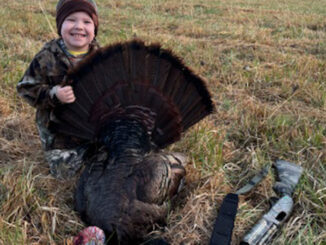

Be the first to comment